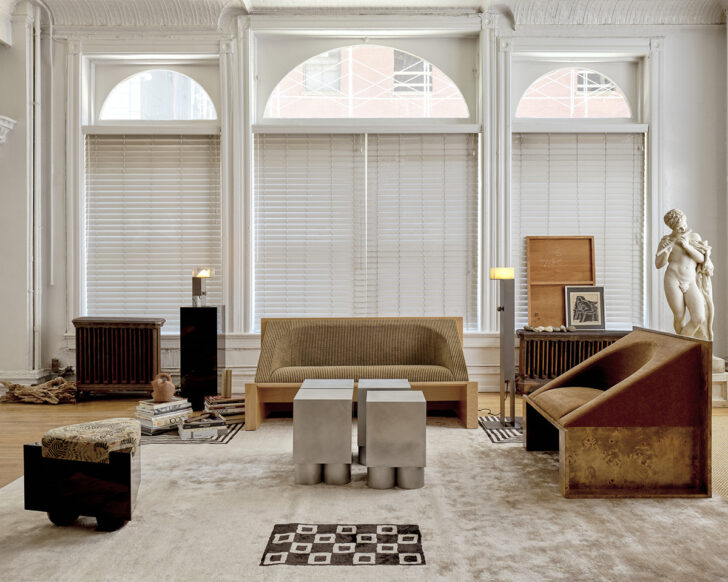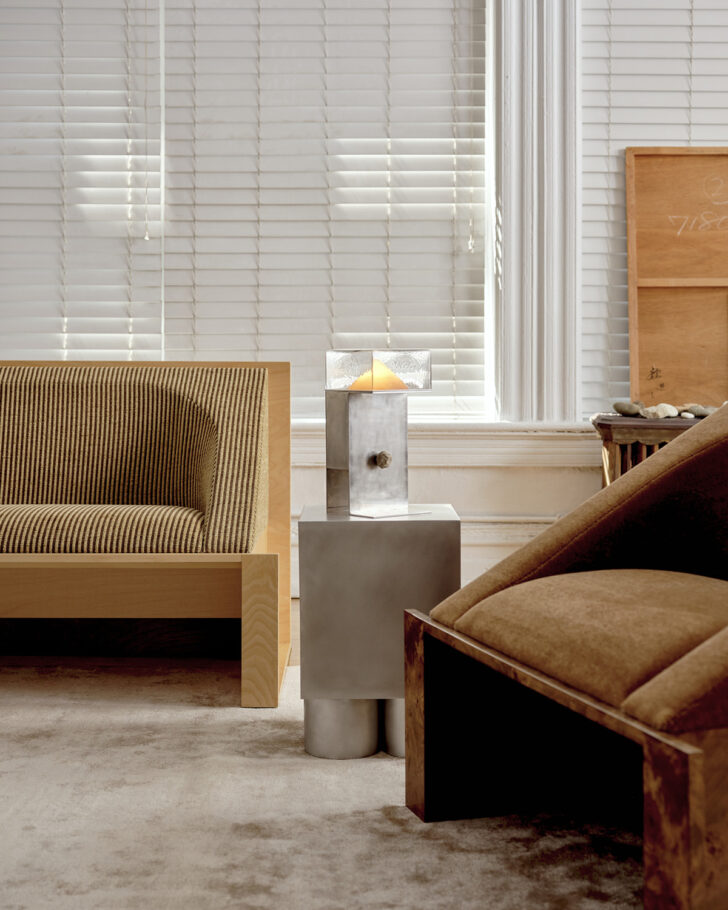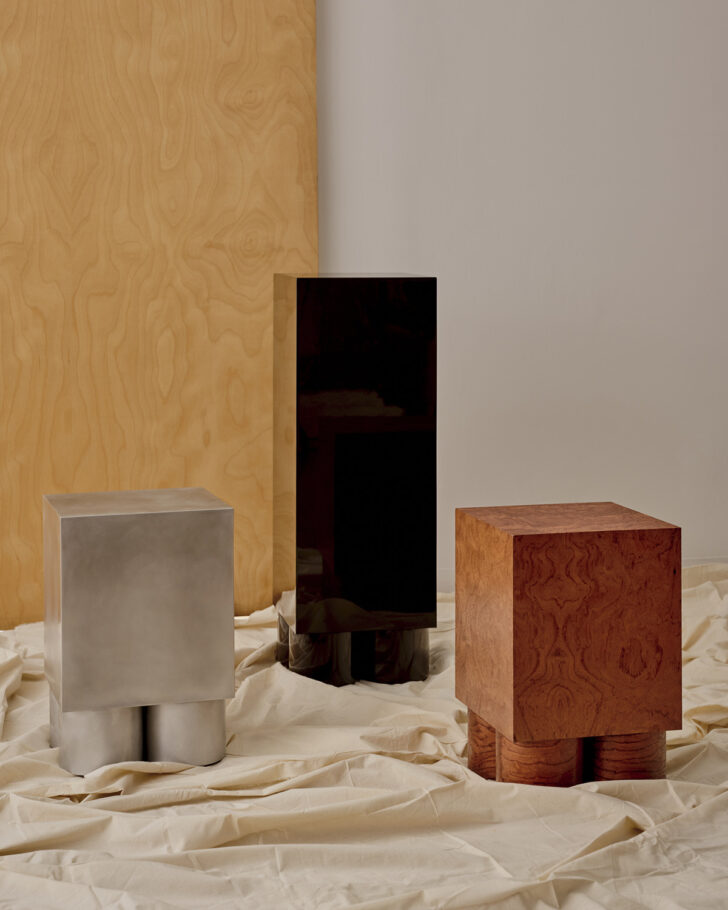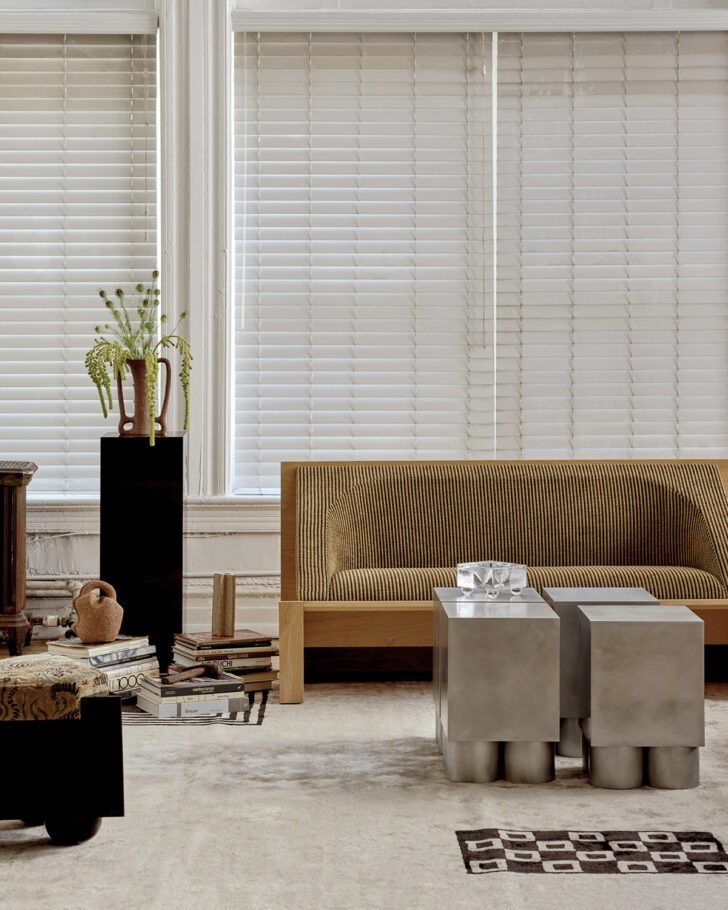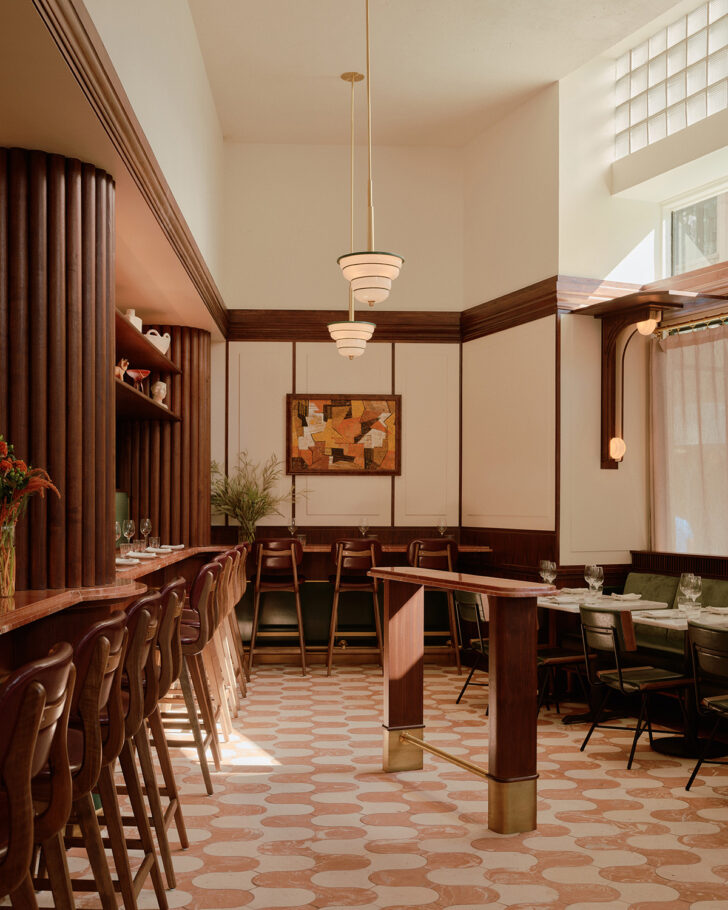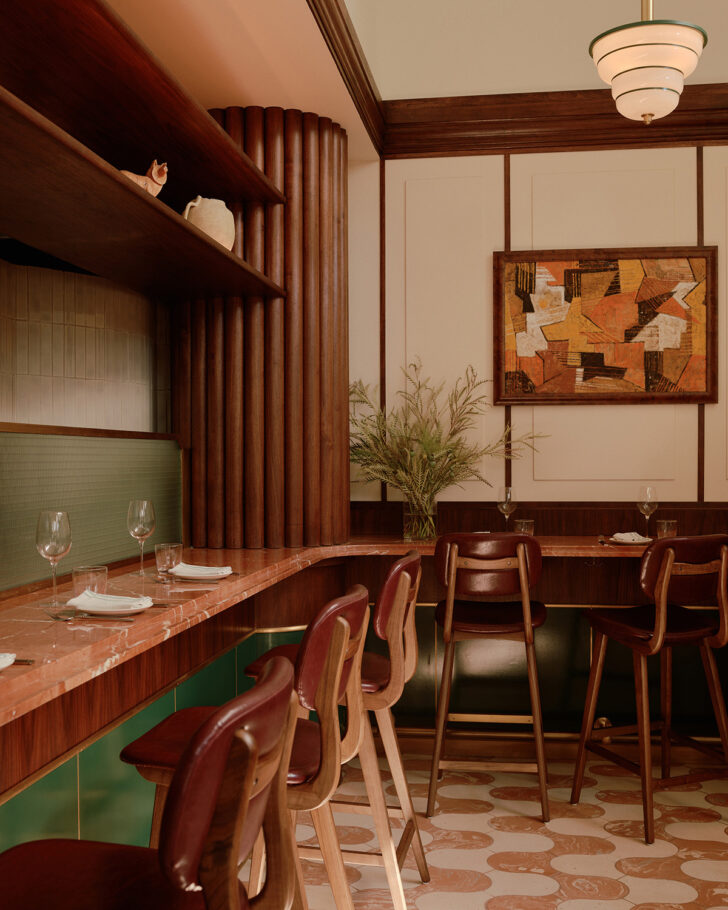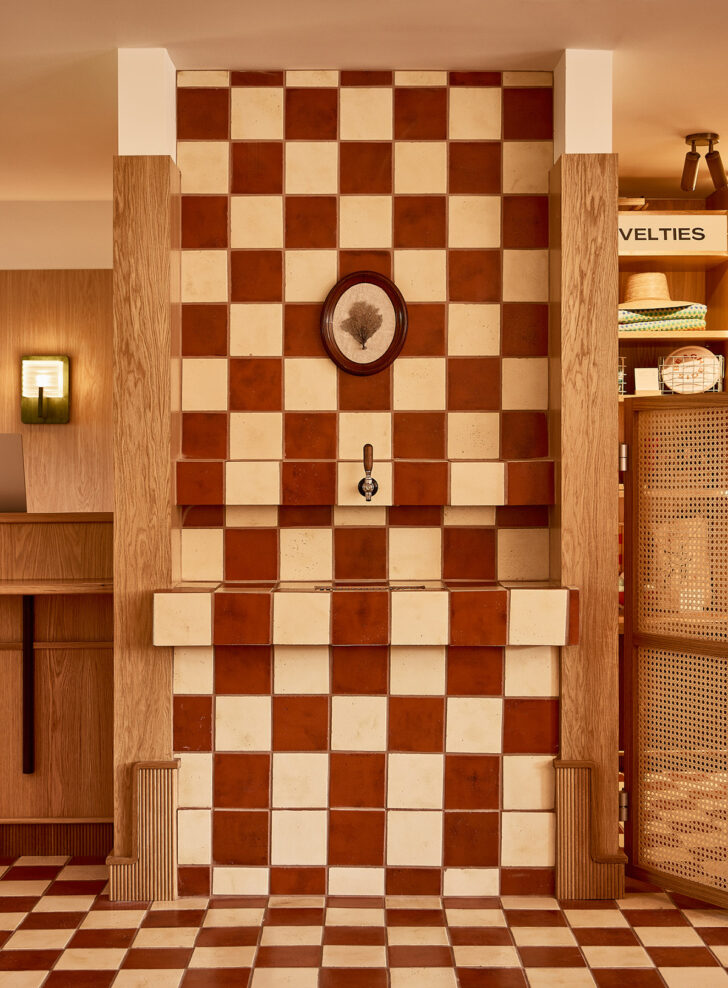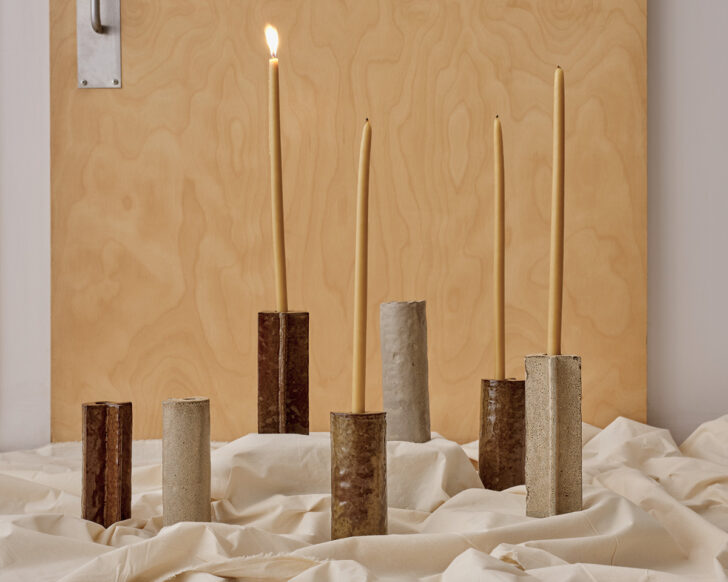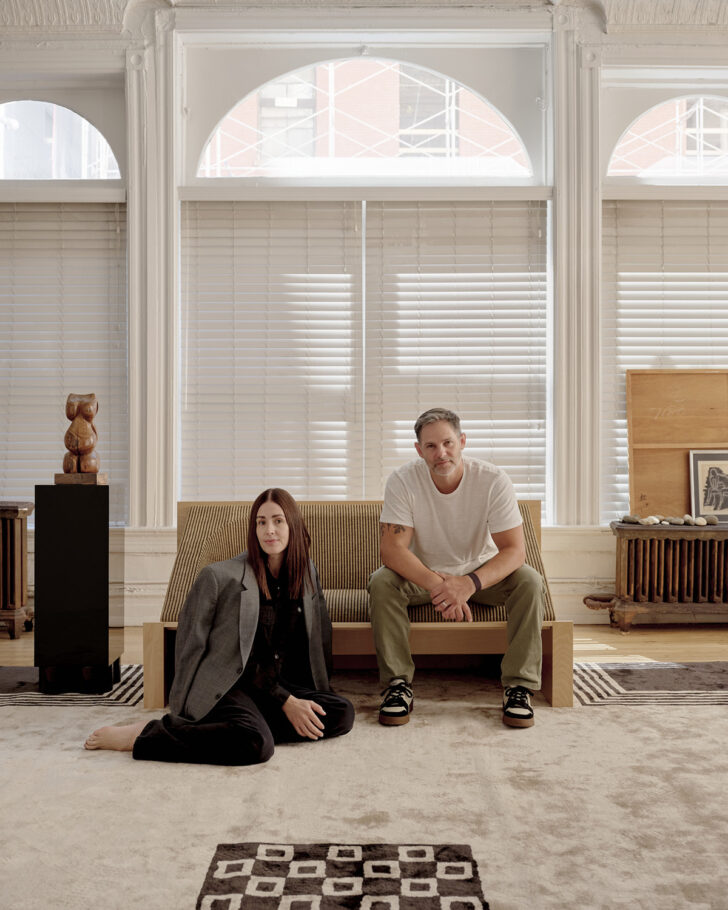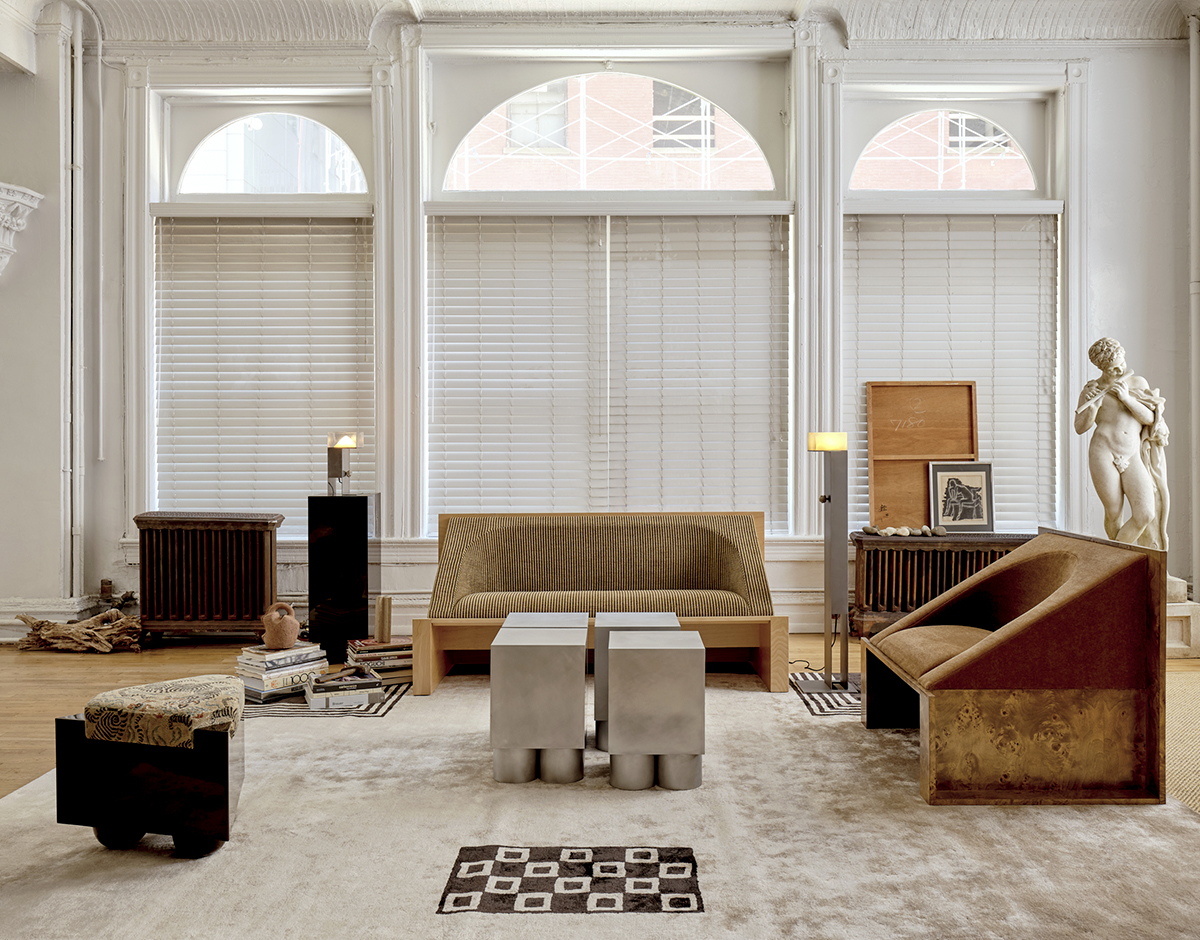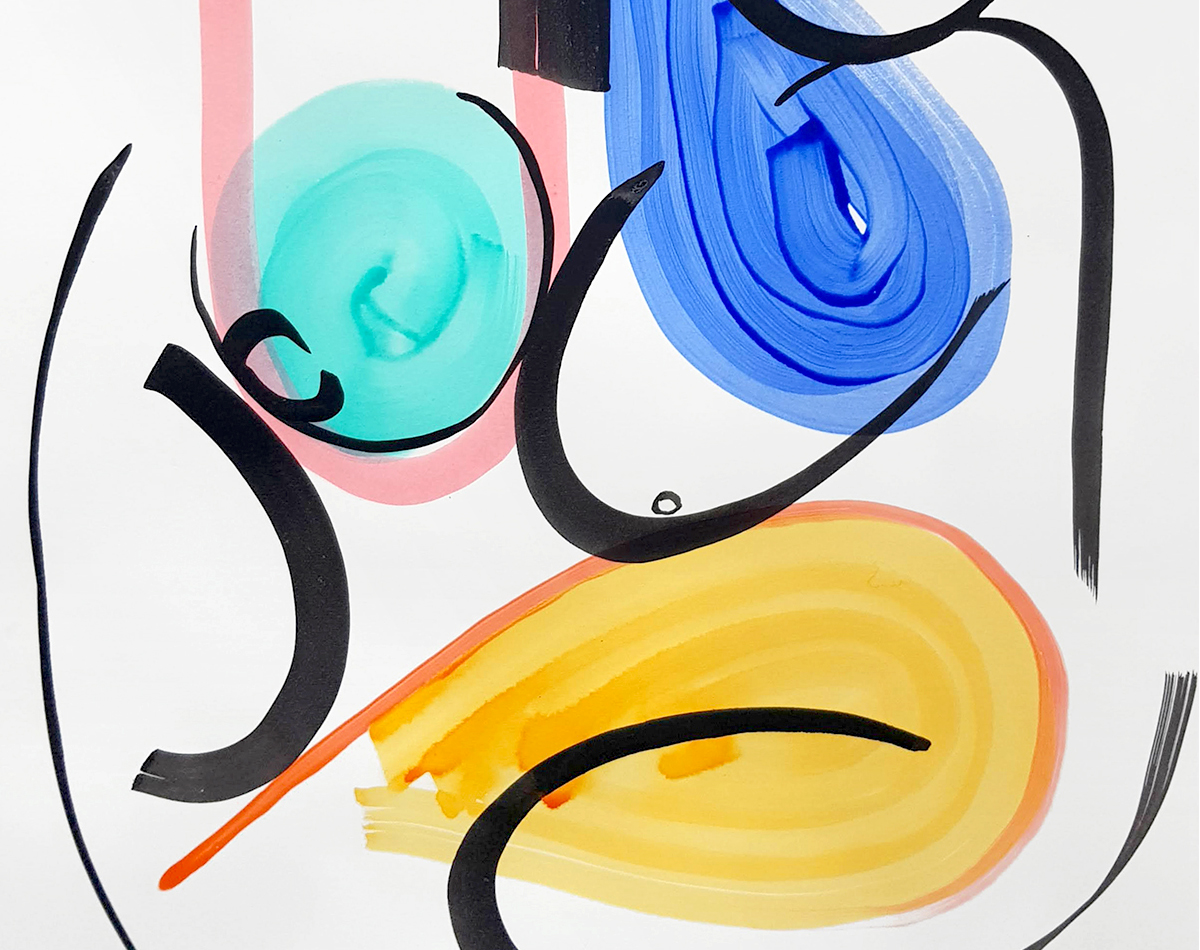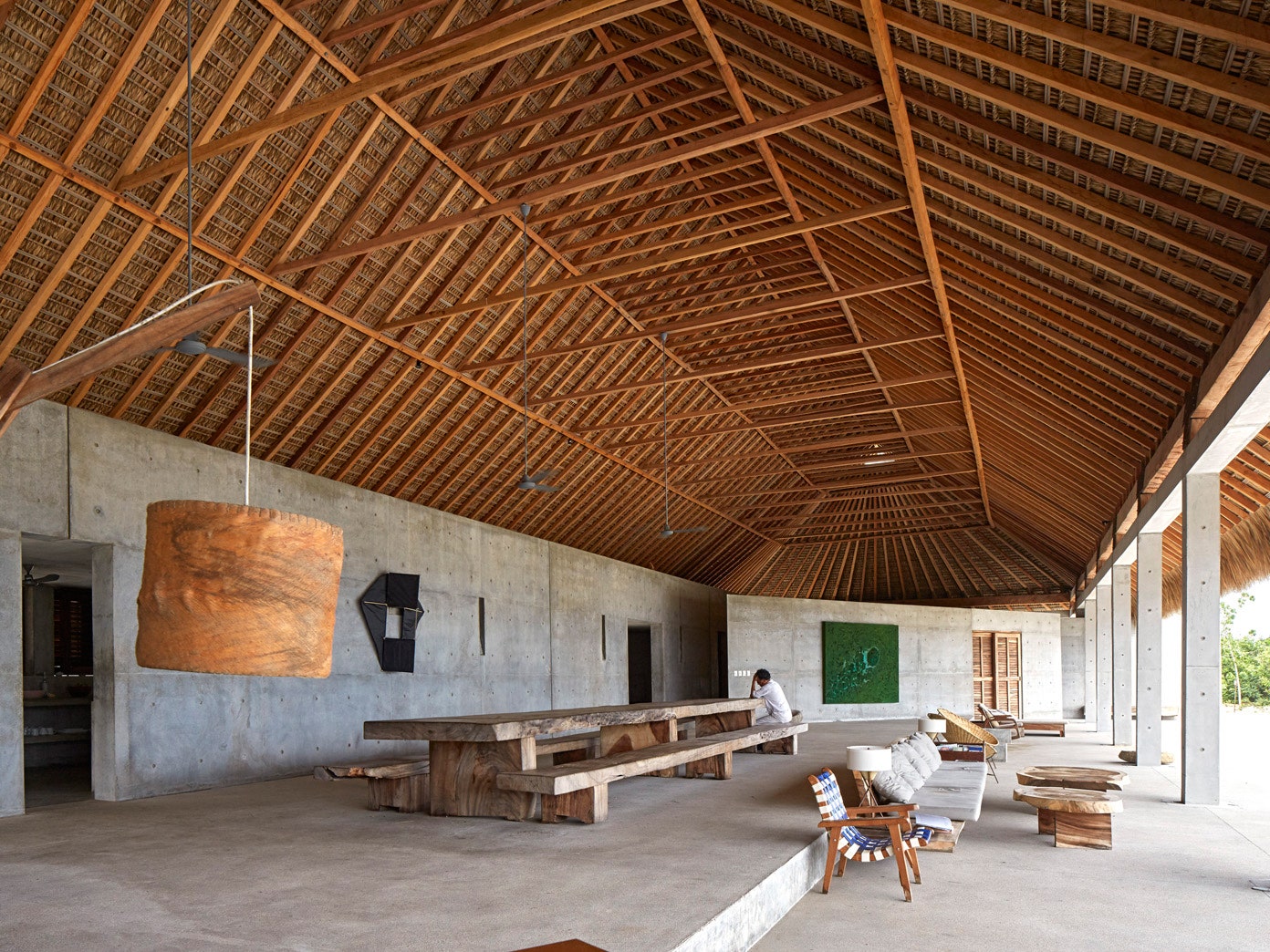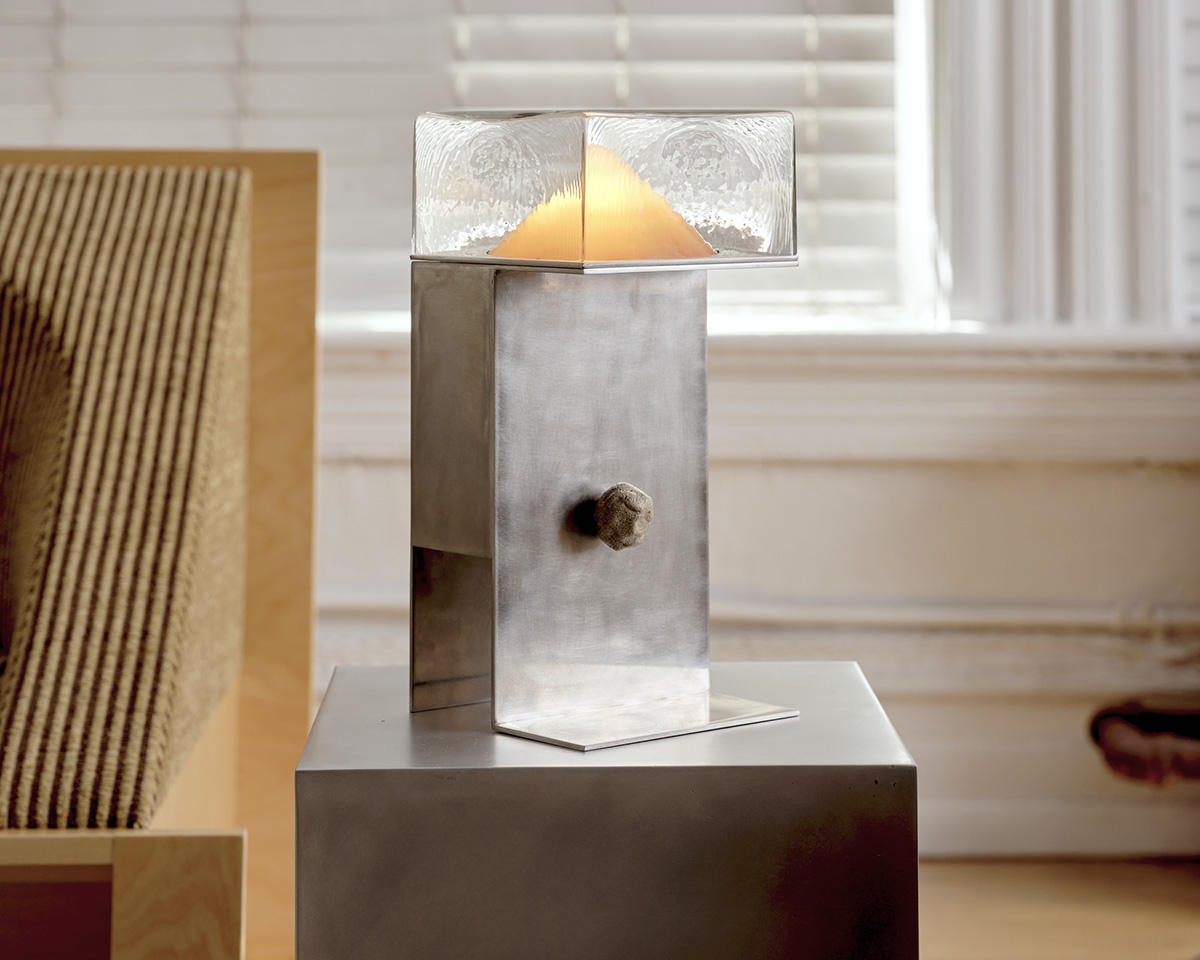
American Design Hot List 2024
Parts & Labor Design / Known Work
New York, partsandlabordesign.com / knownworkstudio.com
An interior design firm launching a furniture line isn’t always a successful gambit, despite hearing from clients day in and out about how — and with what — people like to live. But with their first furniture collection under the name Known Work, Parts & Labor founders Danu Kennedy and Jeremy Levitt — along with creative director Alex Dilena — simply knocked it out of the park. A striped chenille loveseat nestled in a mappa burl husk, a Brutalism-tinged steel lamp topped by a glass cube, a lacquered plinth — yes, this is exactly how people like to live. In their interiors, the studio takes a similar interrogative approach, examining the relationship between us, our objects, and the spaces we inhabit. We can’t wait to see what’s next.
What is American design to you, and what excites you about it?
American design, to us, is about personal expression. An opportunity to create, communicate, and extend something that didn’t exist prior. Design is a global language, and considering there are so many designers in New York and across the country who aren’t American, perhaps “American design” is a catch all for a consolidated expat vision. American design is inherently self-informing as well; because the country is so large, certain “languages” spread and affect each other across states/regions, creating these unique design vernaculars that evolve based on local landscapes.
Seemingly, nowadays, another aspect of the American design landscape comes from this tension that exists in manufacturing and fabrication. We’ve observed this effort to make more for less in order to make design more accessible or increase margins. This inevitably leads to a bit of a copy/paste approach across the industry. In that same breath, there’s also the artisan folks who are building by hand, and American design engaging in the folklore of “the maker.”
Especially here in New York, we’re fortunate to have a community of craftspeople. We’ve really seen a redirection from both a consumer and cultural standpoint leading to an appreciation and focus on quality and time spent in craft. American design is representing an antithesis to trends or an oversaturated market, embracing the celebration and refocus on heirlooms.
We are most excited by this movement towards investing in your environment on the most personal scale, and the stewardship you feel over these precious collectible furniture and craft pieces that one day will be passed on to your beloveds. It’s romantic. It’s very cool to witness. It feels like a true expression of individuals which, ultimately, could not be more of an American idea.
What are your plans and highlights for the upcoming year?
We’re committed to and focused on producing quality offerings that engage ourselves, our clients, and our wider community in a way that elevates their experience and ours. We know who we are and are actively evolving within an established creative system on one hand (with Parts and Labor Design), and on the other hand, (with Known Work) we’re continually learning who we want to be in this new landscape and what we want to offer while allowing ourselves some freedom to play and experiment. It’s exciting! Really two sides of the sword.
We launched Known Work as a studio early last year so the upcoming year will be a lot of heads down, building a business and connecting to and forming new relationships. We aim to launch a new collection each year so 2025 will also deliver some new work from us. So far, we’ve really enjoyed learning about materiality, ultimately through failure and exploration, pushing our knowledge. It’s been refreshing to feel at the mercy of a material; those limitations and unexpected outcomes have guided us into completely different results through the process of fabrication. We’re excited about continuing that apprenticeship (in a way) with Known Work, and continuing to learn through making in both companies.
With PLD, we’re really looking to strengthen the connection to our core design principles, which are centralized around our commitment to quality, craftsmanship, learning from our heroes and those who have come before us as well as continuing to genuinely connect and form meaningful relationships with others to build visionary designs and interior environments with them.
Both Parts and Labor and Known Work are intense creative outlets for us. It’s a really fun and challenging time.
What inspires or informs your work in general?
We’re really interested right now in the connection between body, object, and space. How these work in tandem; how one can adorn and the other react. We live in our physical bodies, and those, in turn, live and fill space in our larger environments. Together they share such a connection of kinetic energy…a life force really.
We’ve been interested in how jewelry can extend beyond the body and into our built environments. The concept of adornment comes from a place of respect and care for what is being adorned and we’ve been thinking about what that means for ourselves, personally, but also how that changes the mindset of how we interact with architecture, objects, furniture, landscape and our spaces. Adorning is a form of stewardship, a version of caring for something that in return cares for us, which ultimately leads to a greater and more communal respect for ourselves and our environment. It’s funny…we do it in so many unintended ways already: Hanging art on the walls, applying a belt to a pair of jeans, or a keychain to our set of keys.
These are the everyday, small ways of expression and decoration. We are revisiting the idea of “average things” that show a careful and considered respect for the adornee. This really plays back to creating and celebrating heirlooms and collectible design, and how these heirlooms continue to evolve and have impact on our lives and our spaces. It’s all a conversation; everything is conversing with and contextualizing its surroundings.
The connection of touch and function, ergonomics and a unique interaction is important to us. We are working with expectations and how we perceive things in our world. We want people to be intrigued and always pleasantly surprised. Within this approach, we also feel there is an inherent restraint and principled discipline that needs to be applied in order to curate the right moment.
